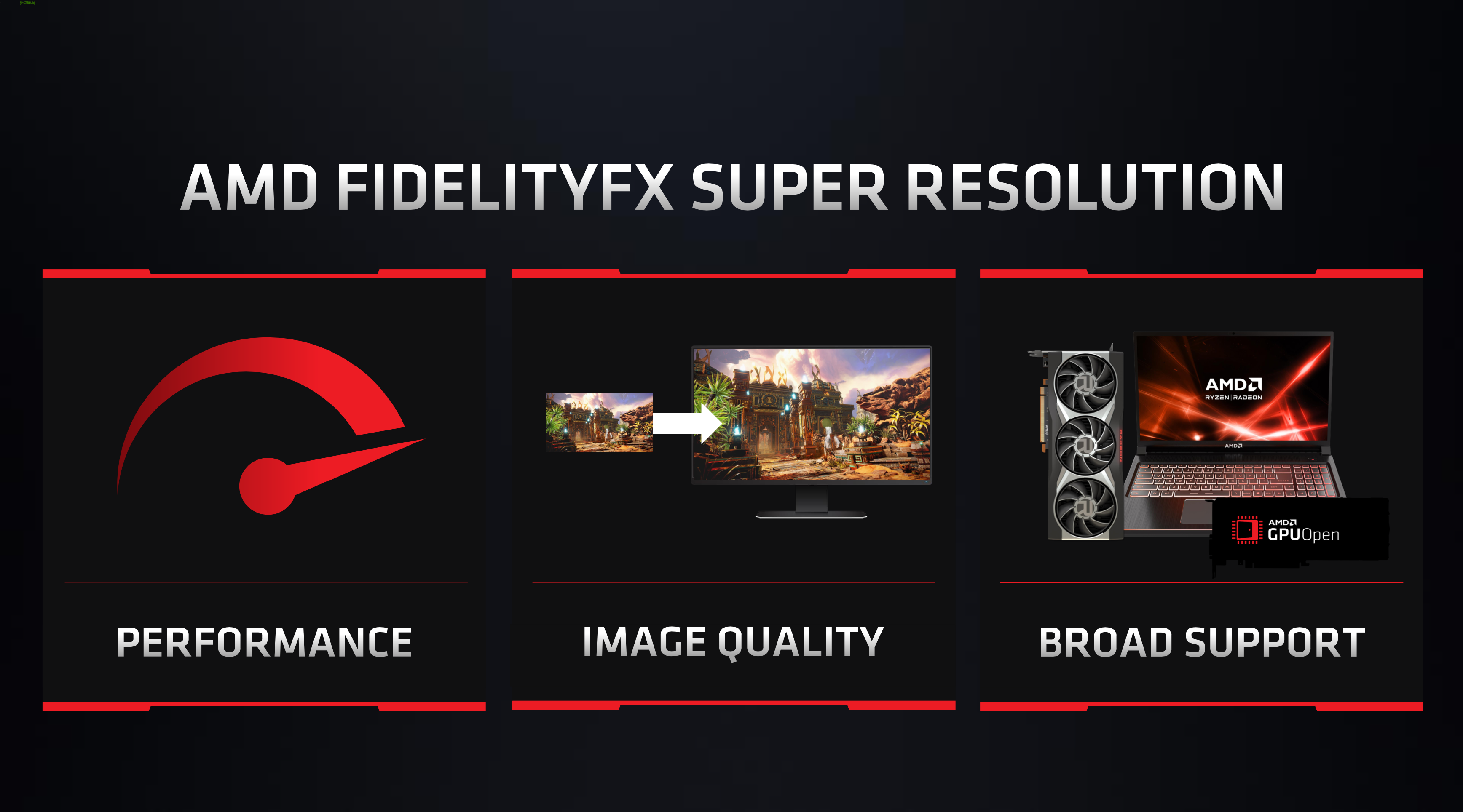After
a long wait
, AMD has finally introduced FidelityFX Super Resolution (FSR), the company’s upscaling technology to rival Nvidia’s machine learning-powered DLSS. It was introduced during AMD chief executive Dr. Lisa Su’s virtual keynote address at Computex, which is being held online this year. The new feature will launch on June 22.
AMD promises that FSR will deliver up to 2.5 times higher performance while using the dedicated performance mode in “select titles.” At least ten game studios will integrate FSR into their games and engines this year. The first titles should show up this month, and the company also detailed FSR’s roots in open source. The feature is based on
AMD’s OpenGPU suite
.
FSR has four presets: ultra quality, quality, balanced and performance. The first two focus on higher quality by rendering at closer to native resolution, while the latter two push you to get as many frames as possible. FSR works on both desktops and laptops, as well as both integrated and discrete graphics.
In its own tests using Gearbox Software’s Godfall (AMD used the
Radeon RX 6900 XT
,
RX 6800 XT
and
RX 6700 XT
on the game’s epic preset at 4K with ray tracing on), the company claimed 49 frames per second at native rendering, but 78 fps using ultra quality FSR, 99 fps using quality, 124 fps on balanced and 150 fps on performance.
But FSR works on other hardware, including Nvidia’s graphics cards. AMD tested one of Nvidia’s older (but still very popular) mainstream GPUs, the GTX 1060, with Godfall at 1440p on the epic preset. It ran natively at 27 fps, but at 38 fps with quality mode on — a 41% boost. In fact, AMD says that FSR, which needs to be implemented by game developers to suit their titles, will work with over 100 CPUs and GPUs, including its own and competitors.
We’ll be able to test FidelityFX Super Resolution when it launches, starting with Godfall on June 22, so keep an eye out for our thoughts. While the performance gains sound impressive, we’re also keen to check out image quality. We’ve been fairly impressed by
Nvidia’s DLSS 2.0
, but the original DLSS implementation was far less compelling. It seems as though AMD aims to provide similar upscaling but without all the fancy machine learning.
Su’s keynote included other graphics announcements, such as the launch of the
Radeon RX 6800M, RX 6700M and RX 6600M mobile GPUs
based on RDNA 2, as well as a handful of new APUs.
